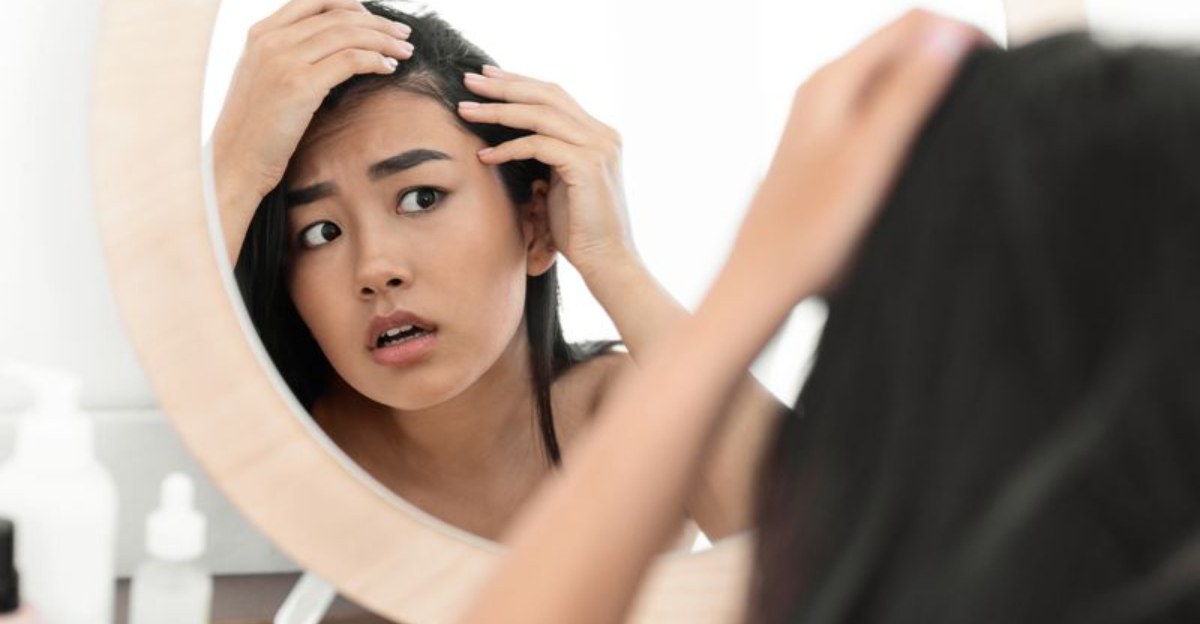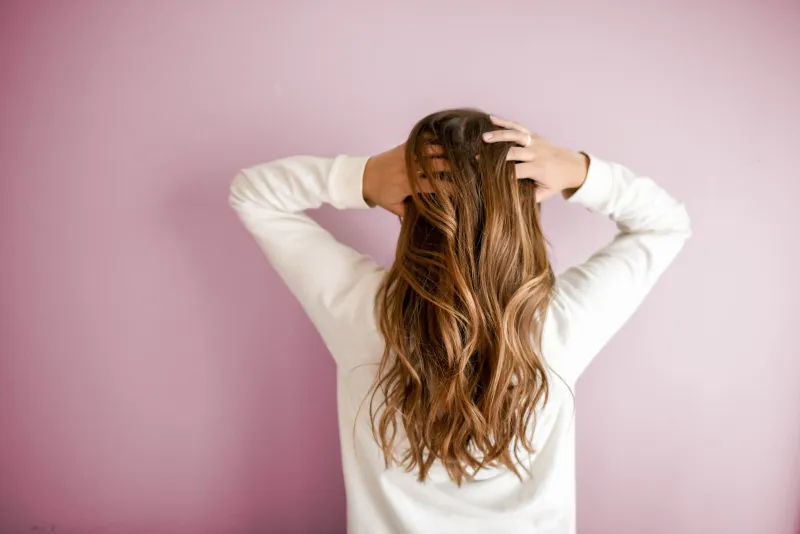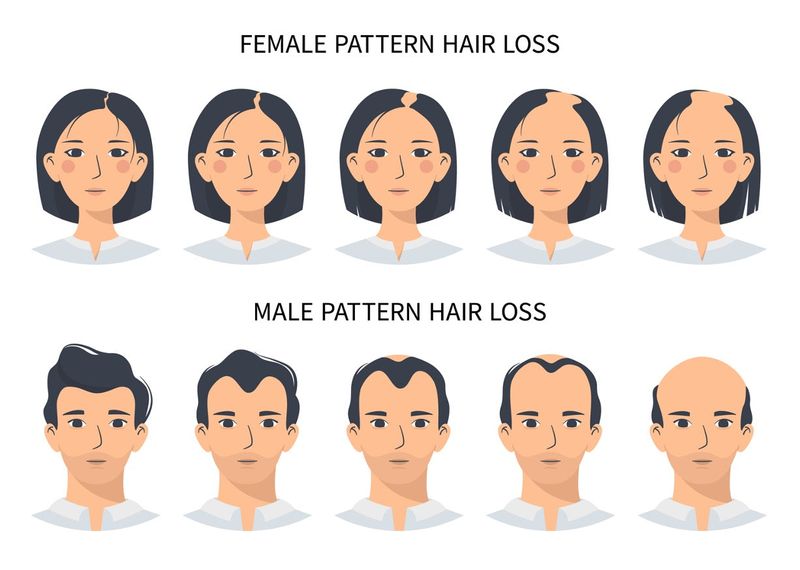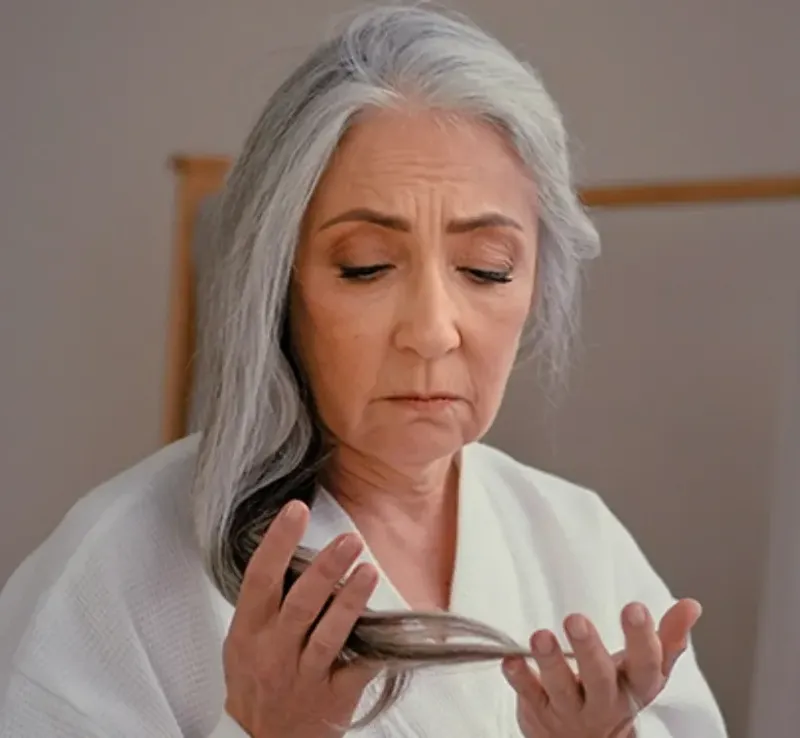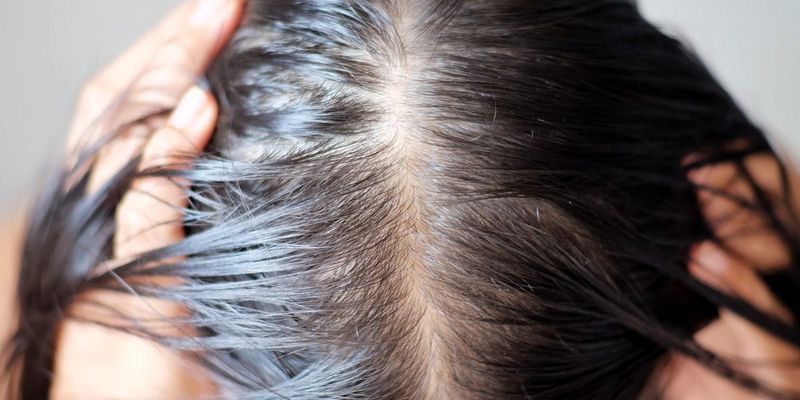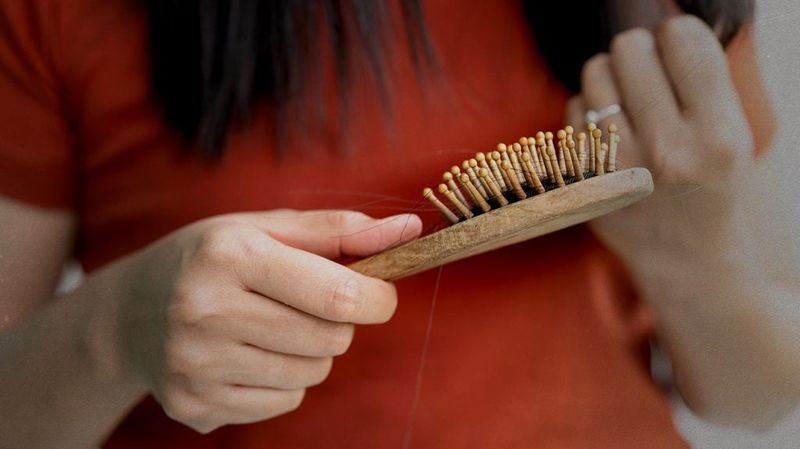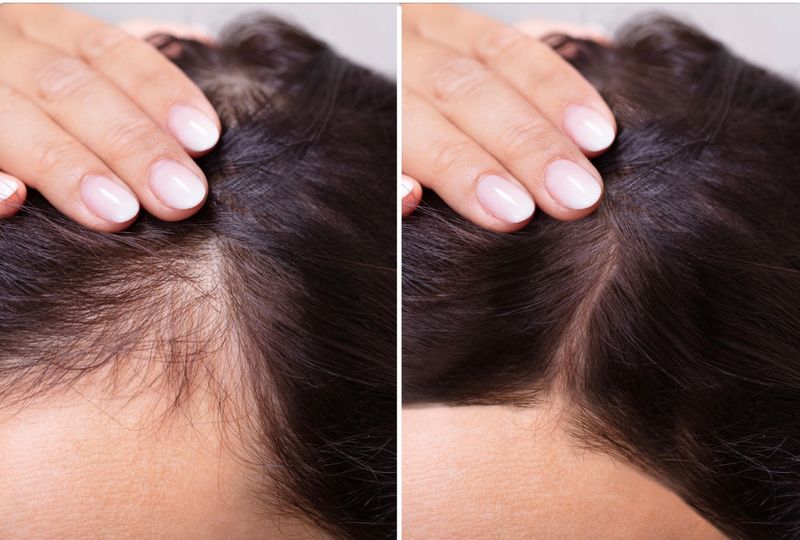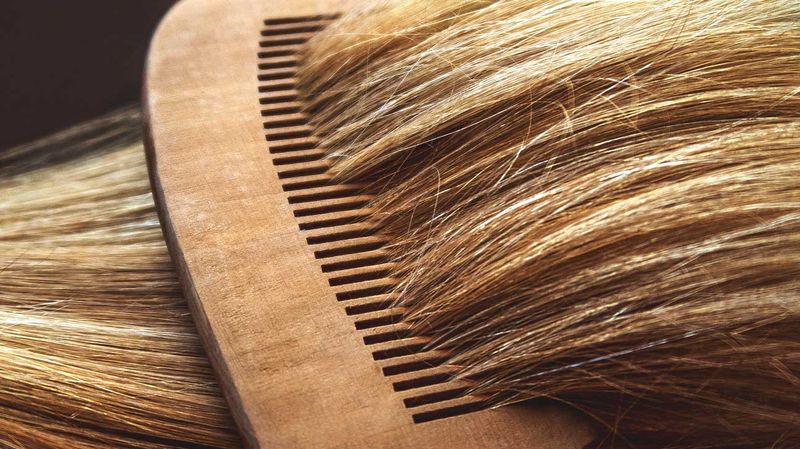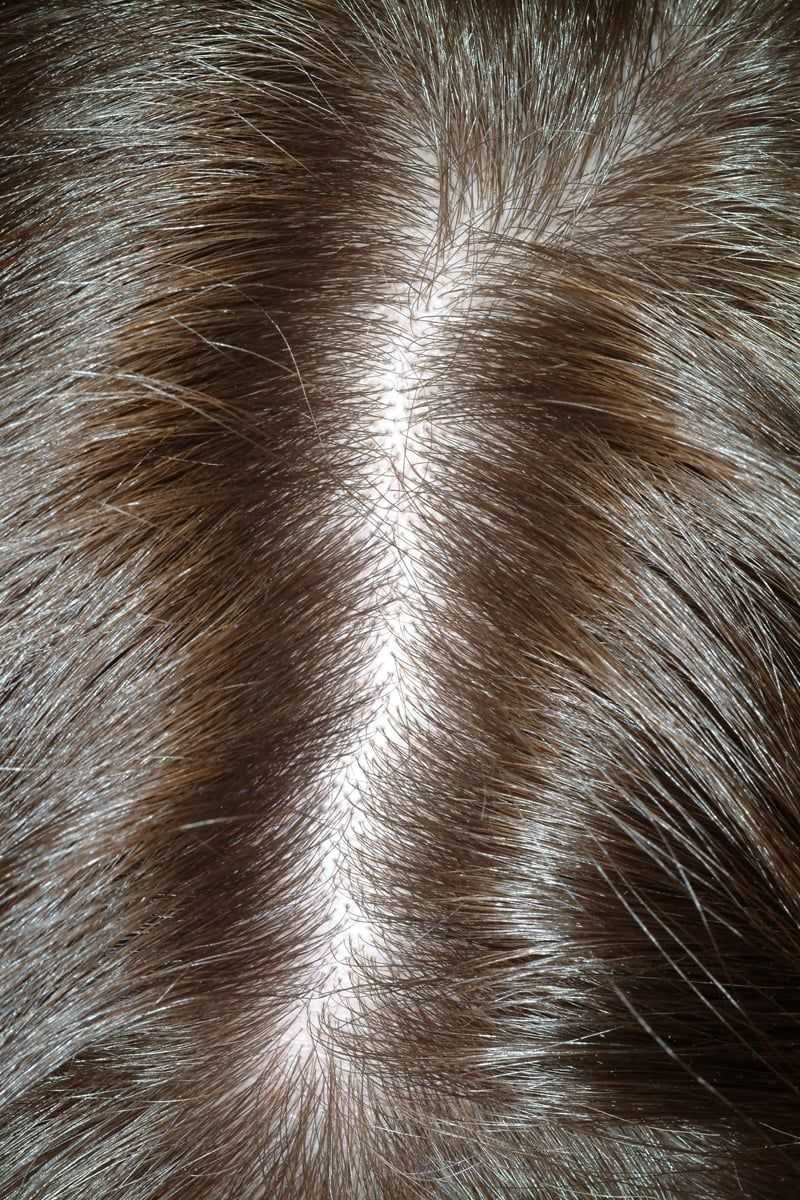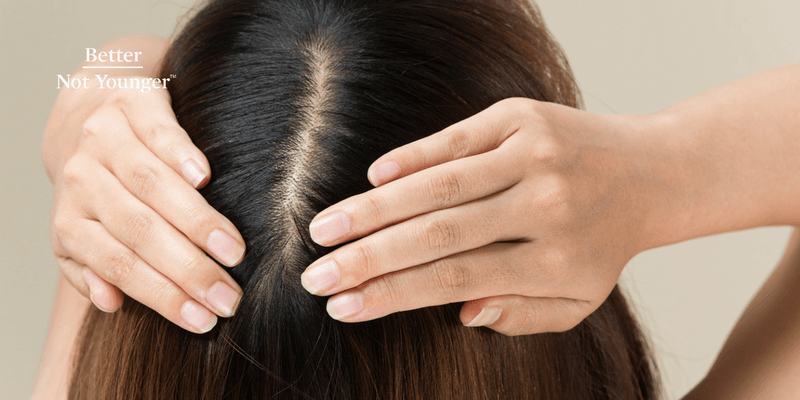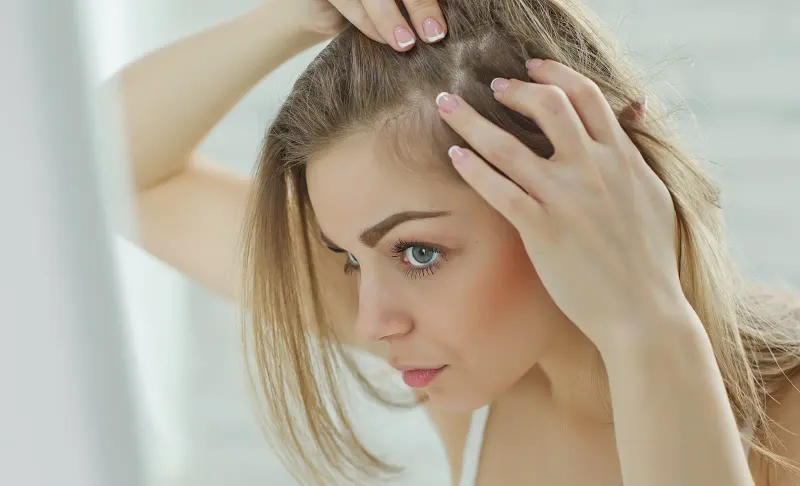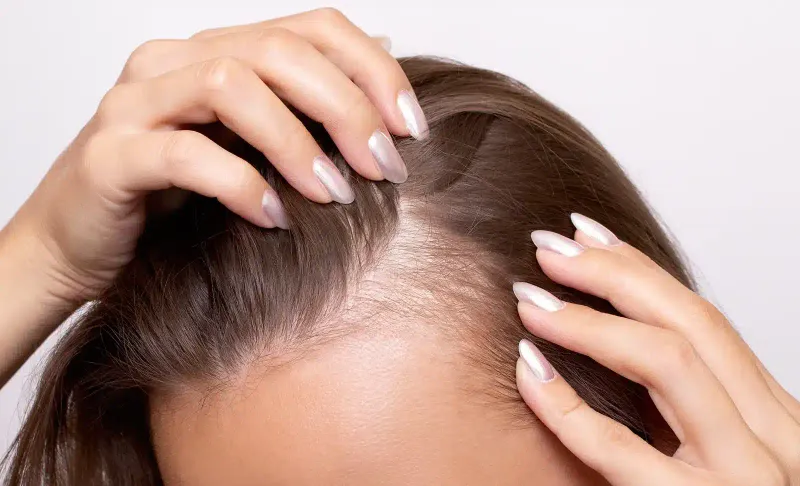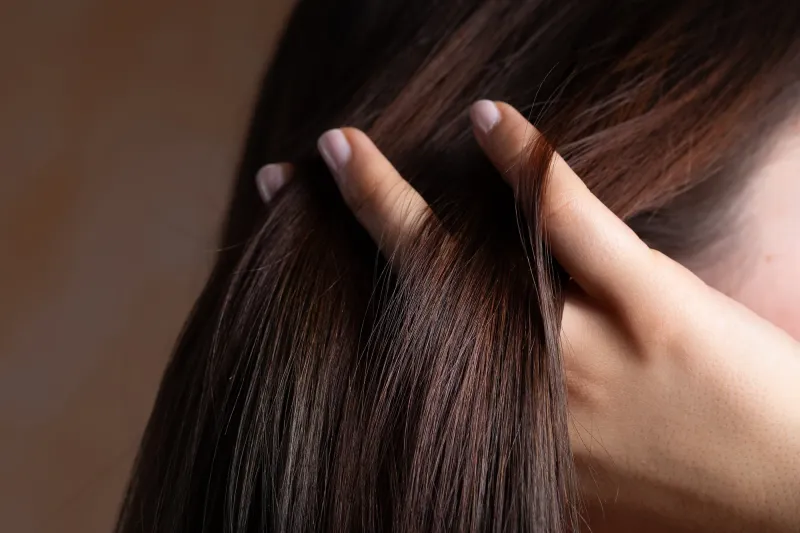Ever noticed your hair changing during different life stages? That’s your hormones at work! These powerful chemical messengers don’t just control your mood and energy—they dramatically influence your hair’s thickness, growth rate, and overall health. Understanding how hormones affect your locks can help you take better care of your crowning glory and address issues before they become serious problems.
1. Pregnancy Hair Glow Isn’t Just Your Imagination
Those luscious locks during pregnancy? Thank your elevated estrogen levels! During these nine months, hair stays longer in its growth phase, meaning fewer strands fall out daily while new ones keep growing.
The result is that thick, shiny mane many pregnant women enjoy. But don’t get too attached—after delivery, hormone levels drop rapidly, and those extra hairs will shed.
Related: -7 Straight-Hair Problems No One Talks About And 8 Easy Fixes That Shine
To minimize post-pregnancy hair loss, continue prenatal vitamins (with your doctor’s approval), use gentle hair products, and avoid tight hairstyles that pull on your scalp. Remember: this shedding is temporary and usually resolves within 6-12 months.
2. Thyroid Troubles Show Up In Your Strands
Your thyroid is like your body’s gas pedal—when it’s running too slow (hypothyroidism) or too fast (hyperthyroidism), your hair pays the price. With low thyroid function, hair becomes brittle, dry, and falls out more easily, even from your eyebrows.
High thyroid levels can cause fine, thinning hair. The good news? Treating the underlying thyroid issue often reverses these changes.
If you notice unexplained hair changes along with fatigue, weight fluctuations, or temperature sensitivity, ask your doctor about thyroid testing. The right medication can restore both your hormonal balance and your hair’s vitality.
3. Male Pattern Baldness Has Hormonal Roots
That receding hairline isn’t just bad luck—it’s dihydrotestosterone (DHT) at work. This powerful form of testosterone shrinks hair follicles on the scalp, making each hair thinner until eventually, the follicle stops producing hair altogether.
Genetics plays a huge role in how sensitive your follicles are to DHT. That’s why baldness patterns often mimic those of family members.
Medications like finasteride work by blocking DHT production, while minoxidil helps improve blood flow to remaining follicles. For best results, start treatment early—these options work better at maintaining existing hair than regrowing what’s already lost.
4. Stress Hormones Create A Vicious Hair Cycle
When you’re stressed, your body pumps out cortisol, triggering inflammation and pushing more hair follicles into their resting phase. The result? More hairs falling out when you brush or shower.
Chronic stress can also constrict blood vessels, limiting nutrient delivery to your scalp. This double-whammy explains why particularly stressful periods often lead to noticeable hair shedding about 3-4 months later.
Stress-management techniques like meditation, regular exercise, and adequate sleep can help keep cortisol levels in check. Adaptogenic herbs like ashwagandha may also help your body resist stress effects, potentially protecting your precious strands.
5. Menopause Brings Major Hair Changes
As estrogen levels plummet during menopause, many women notice their hair becoming thinner all over. At the same time, the relative increase in androgens (male hormones) can cause surprising new growth—on the face!
The scalp’s oil production also decreases, leaving hair drier and more prone to breakage. Many women describe their once-thick locks as suddenly feeling “see-through.”
Hormone replacement therapy may help some women, but it’s not right for everyone. Volumizing hair products, scalp stimulating treatments, and collagen supplements can improve appearance and health of menopausal hair. Consider a shorter cut that creates the illusion of fullness.
6. PCOS Creates Hair Havoc Inside And Out
Polycystic Ovary Syndrome creates a perfect storm for hair troubles. Excess androgens cause thinning on the scalp while simultaneously promoting unwanted facial and body hair growth—a frustrating contradiction!
Women with PCOS often notice their part widening or their ponytail feeling thinner. Meanwhile, darker, coarser hair may appear on the chin, upper lip, or chest.
Treatments that lower androgen levels—like spironolactone or certain birth control pills—can help manage both issues. A low-glycemic diet may also improve PCOS symptoms by reducing insulin resistance, which drives androgen production. Regular dermatologist visits can help monitor progress and adjust treatment accordingly.
7. Birth Control Pills Can Be Hair Heroes Or Villains
Hormonal contraceptives affect everyone differently. Some women experience thicker, healthier hair while taking birth control pills, especially formulations that suppress androgens. This can be particularly beneficial for conditions like PCOS.
Others notice increased shedding—especially when starting, stopping, or switching pills. This happens because hormone fluctuations can shock hair follicles into their resting phase.
If you’re experiencing unwanted hair changes after starting birth control, talk to your doctor about switching to a different formulation. Pills containing drospirenone or cyproterone acetate tend to be more hair-friendly. Allow at least three months on any new pill before judging its effects on your hair.
8. Insulin Resistance Affects More Than Your Waistline
When your cells resist insulin’s effects, your body produces more of this hormone, creating a cascade that ultimately increases androgen production. These excess androgens can shrink hair follicles on your scalp while promoting unwanted hair elsewhere.
The connection explains why conditions like diabetes and metabolic syndrome often come with hair changes. Improving insulin sensitivity through diet and exercise can make a real difference.
Focus on reducing refined carbs and sugar while increasing protein, healthy fats, and fiber. Supplements like inositol, chromium, and berberine may help improve insulin function. As insulin levels normalize, many people notice improved hair growth and texture within several months.
9. Postpartum Hair Loss Isn’t Forever
The infamous postpartum shed strikes around 3-4 months after delivery when estrogen levels plummet. Suddenly, all those extra hairs that stayed put during pregnancy decide to exit at once!
Many new moms find hair coming out in handfuls, especially around the hairline, creating those characteristic “baby bangs.” While alarming, this process—called telogen effluvium—is completely normal and temporary.
Gentle hair care is crucial during this time. Skip tight ponytails, use wide-tooth combs, and consider a shorter cut to reduce weight on follicles. Collagen supplements, biotin, and iron (if you’re deficient) may support regrowth. Most importantly, remember this phase passes—typically resolving completely by your baby’s first birthday.
10. Cortisol Spikes Can Trigger Sudden Shedding
Major physical or emotional stress—surgery, severe illness, job loss, or grief—sends cortisol levels soaring. This stress hormone can abruptly push hair follicles from growth phase to resting phase, resulting in noticeable shedding weeks or months later.
Unlike gradual thinning, this type of hair loss (telogen effluvium) affects the entire scalp at once. You might notice your shower drain clogging or your brush filling up much faster than usual.
The good news? Once the stressful event passes and cortisol levels normalize, hair typically regrows completely. Focus on stress management, proper nutrition, and gentle hair care during recovery. Adaptogens like rhodiola and ashwagandha may help moderate your body’s stress response.
11. Growth Hormone Deficiency Shows In Your Strands
Growth hormone doesn’t just affect your height—it plays a crucial role in hair follicle development and cycling. Adults with growth hormone deficiency often notice fine, thin hair that grows slowly and lacks volume.
This hormone helps stimulate cell reproduction and regeneration throughout the body, including in hair follicles. When levels are low, hair production slows and strand quality diminishes.
While growth hormone therapy is typically reserved for diagnosed deficiencies, certain lifestyle factors can naturally optimize your levels. Prioritize quality sleep (growth hormone peaks during deep sleep), regular exercise (particularly high-intensity intervals), and adequate protein intake. Intermittent fasting may also boost growth hormone production.
12. Vitamin D Acts More Like A Hormone Than A Vitamin
Though we call it a vitamin, vitamin D functions more like a hormone in your body, interacting with nearly every cell—including hair follicles. Low levels are linked to both female and male pattern hair loss, as well as autoimmune hair conditions.
Vitamin D helps create new follicles and may activate dormant ones. It also regulates the hair growth cycle, keeping strands in the growing phase longer.
Get your levels checked—many people are deficient without realizing it. If your numbers are low, a supplement may help, but don’t overdo it—vitamin D toxicity is possible. Regular (protected) sun exposure, fatty fish, egg yolks, and fortified foods can also boost your levels naturally.
13. Testosterone Isn’t Just A Male Concern
Women have testosterone too—just in smaller amounts. When these levels rise due to conditions like PCOS or adrenal disorders, hair follicles on the scalp can shrink while facial and body hair grows thicker and darker.
The hormone itself isn’t the problem—it’s the conversion to DHT (dihydrotestosterone) that causes trouble. DHT binds to follicle receptors, gradually miniaturizing them until they stop producing hair.
Anti-androgen medications can help block this conversion. Certain supplements like saw palmetto and pumpkin seed oil may offer milder effects. Regular testing can monitor levels, especially if you’re experiencing symptoms like hair thinning, acne, or irregular periods—all potential signs of hormonal imbalance.
14. Prolactin Imbalances Affect More Than Breastfeeding
This breastfeeding hormone can cause unexpected hair issues when levels are abnormal. High prolactin (hyperprolactinemia) disrupts other hormone production, potentially leading to increased androgens and subsequent hair thinning on the scalp.
Elevated prolactin isn’t just for new moms—certain medications, pituitary tumors, or thyroid disorders can cause it in anyone. Besides hair changes, symptoms might include irregular periods, decreased libido, or unexpected lactation.
If you suspect imbalanced prolactin, request testing. Treatment depends on the cause but might include medication adjustments, supplements like Vitamin B6, or medications that specifically lower prolactin. Addressing the underlying hormone imbalance typically resolves the hair issues.
15. Estrogen Dominance Creates Scalp Sensitivity
When estrogen levels are disproportionately high compared to progesterone, your scalp may become more sensitive and prone to inflammation. This condition—estrogen dominance—can cause increased oiliness, dandruff, and even hair loss in some cases.
Environmental estrogens from plastics, pesticides, and personal care products may contribute to this imbalance. Your scalp might feel tender when you brush your hair, and you might notice more sebum production than usual.
Supporting your liver’s detoxification pathways with cruciferous vegetables, regular exercise, and supplements like DIM (diindolylmethane) may help metabolize excess estrogens. Seed cycling—eating specific seeds during different phases of your menstrual cycle—is another natural approach some women find helpful.

